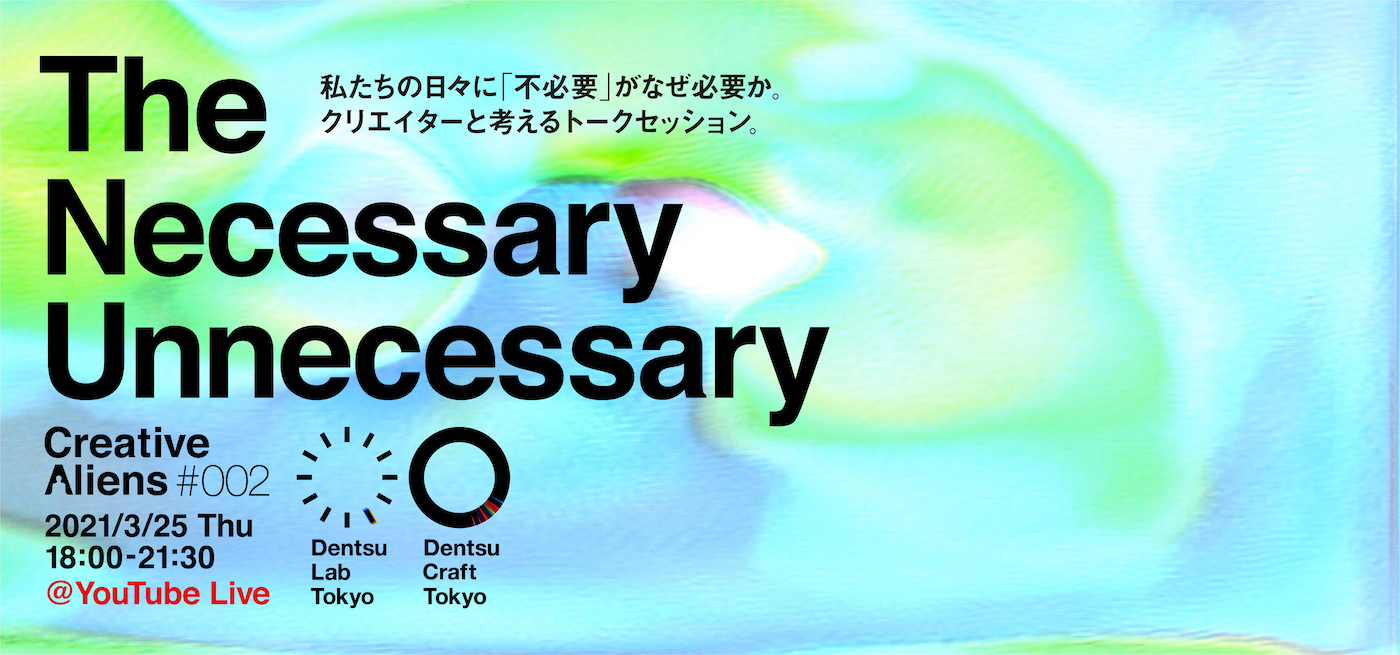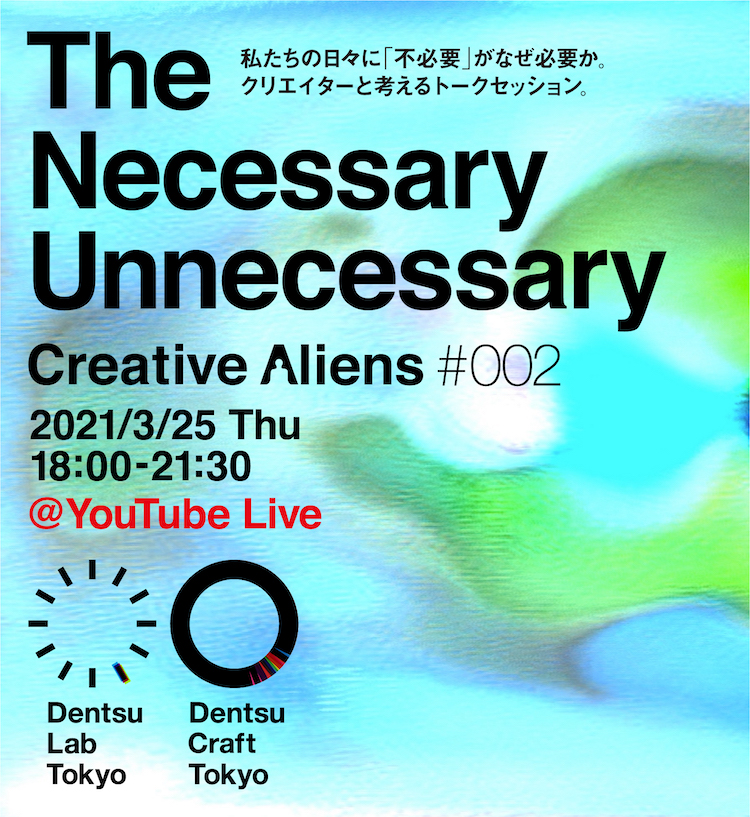【Opening Talk】Leading up to Creative Aliens #002
What is “Creative Aliens”?
The opening session began with a talk by Takashi Kawashima, who planned and curated this event for Dentsu Craft Tokyo, and moderator Yuna Tsukada.

Creative Aliens is an event-based project that was launched in 2019 by Dentsu Lab Tokyo and Dentsu Craft Tokyo.
Aiming to “update” the common sense of creativity and the ways in which creative works are created, the project invites creators active in various fields to join the event as guests under current and relevant themes.
The theme of the first session, held in October 2019,
was “AI×Creativity.”
AI
artists and researchers were invited for a talk session
and workshop.

The theme: “The Necessary Unnecessary”
The theme of the second holding of Creative Aliens was “The Necessary Unnecessary”.
In the wake of the coronavirus pandemic, many cultural
activities were subject to the
“non-essential/non-urgent” restraint.
While medical
and infrastructure jobs were listed as “essential”,
artists were ranked #1 in a Singapore newspaper survey
that ranked “non-essential jobs”.

However, looking back on the past year, we have all spent significant time living the “stay-home” lifestyle, during which time we undoubtedly encountered various creations produced by artists.
In this era where we’re often faced with opposing forces, like “necessity” and “non-necessity,” and are forced to choose between them, perhaps choosing to embrace the “ambiguous”, the seemingly incomprehensible, will end up enriching our lives. Kawashima explains that it was with this idea in mind that he chose “unnecessary but necessary” as the theme for this event.
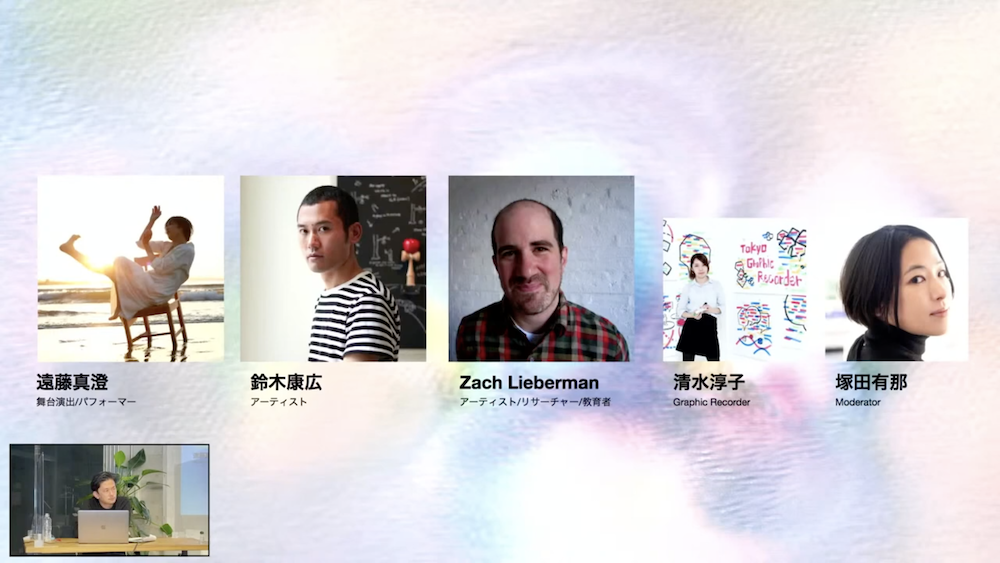
The invited guests to Creative Aliens this time were dancer and performer Masumi Endo, artist Yasuhiro Suzuki, and artist and educator at MIT Zach Lieberman.
Graphic recorder, Junko Shimizu, illustrated the contents of the talk in real-time creating a “map of thoughts” that included various representative illustrations and diagrams.
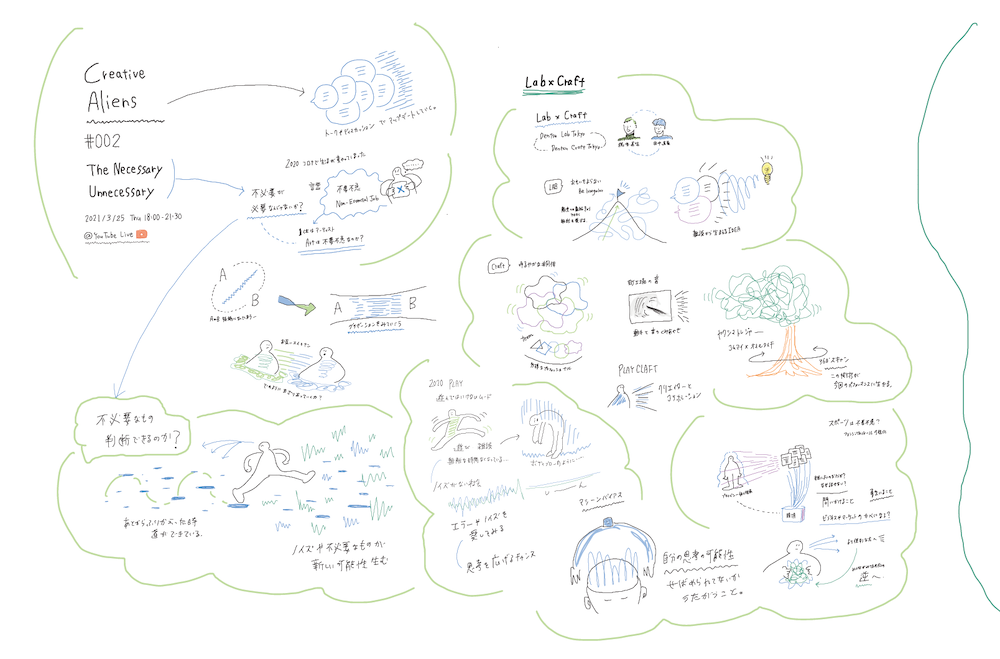
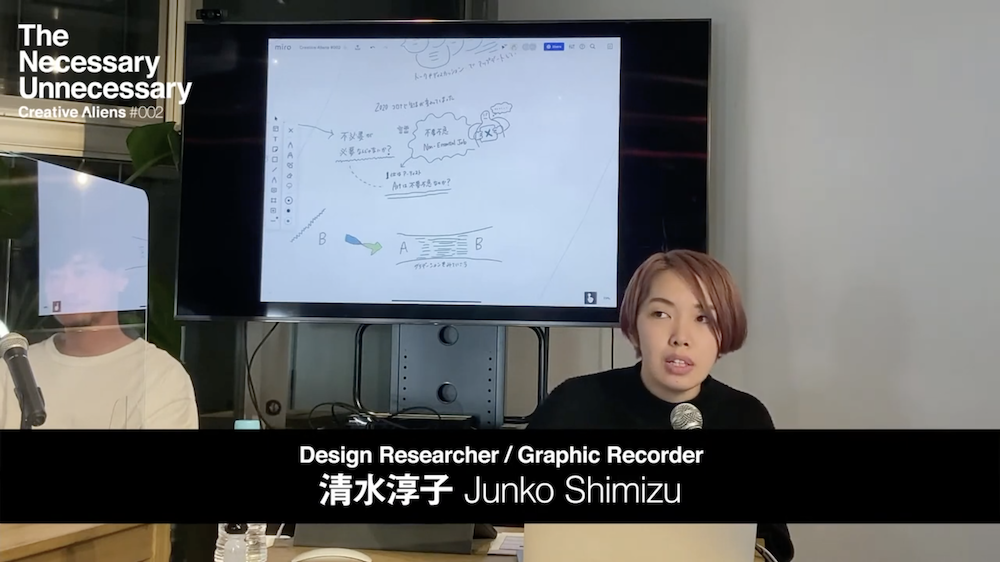
The full graphic recording of the three and a half hour talk can be viewed here.
【Dentsu Lab Tokyo and Dentsu Craft Tokyo】Embrace the errors and bugs, and have fun while creating
Following the opening talk, was an introduction of Dentsu Lab Tokyo from its Creative Director Naoki Tanaka and of Dentsu Craft Tokyo from its Head of Technology Nao Tokui.
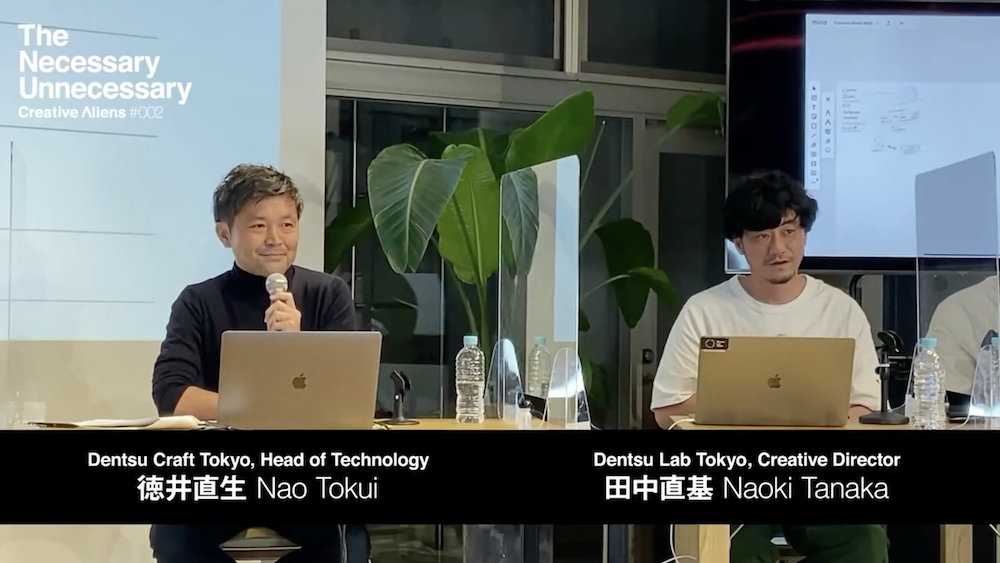
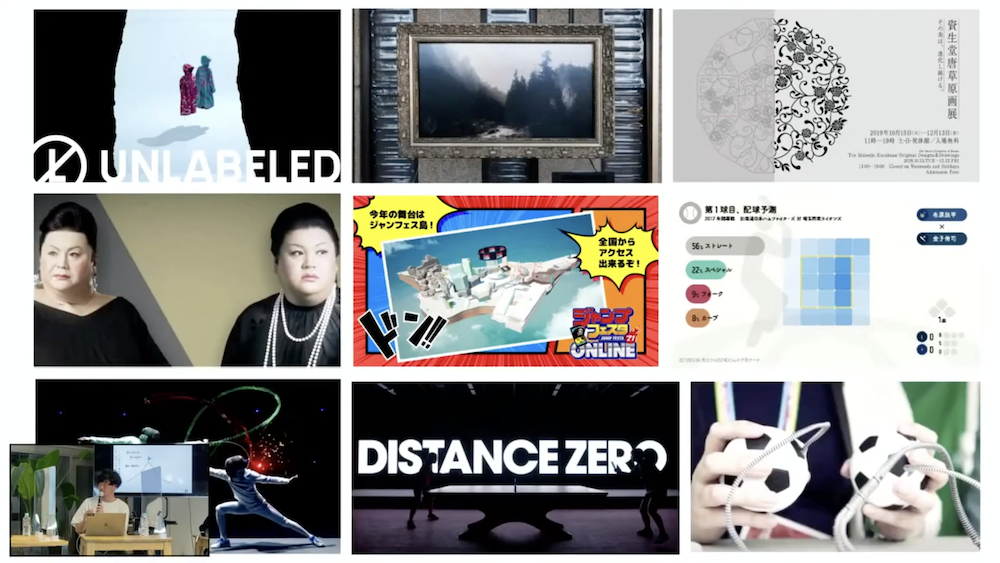

Details on all their individual projects can be found on
their official websites.
(Click here
for the works of Dentsu Lab Tokyo, and
here
for the works of Dentsu Craft Tokyo
In the talk session after the presentations, the guests touched on how going remote has led to a decrease in idle conversation, and how during the pandemic going out comes with restrictions.
While they’ve seen less waste and more efficiency,
Tanaka and Tokui said that looking back on their work
before the pandemic, “a lot of projects were born out of
just hanging out and talking.”
The talk session
concluded with the words, “In order to create something
that does more than just solve the immediate problem,
you need to embrace the errors and bugs that come along
the way and allow yourself to have fun.”
【TALK1 & Special Performance|Masumi Endo】Share in the Invisible of the Body and Mind
Traveling through the landscape of the mind with dance and technology
The first guest was dancer and performer, Masumi
Endo.
She started with “Somew/here,” a dance
performance specially created for the event.
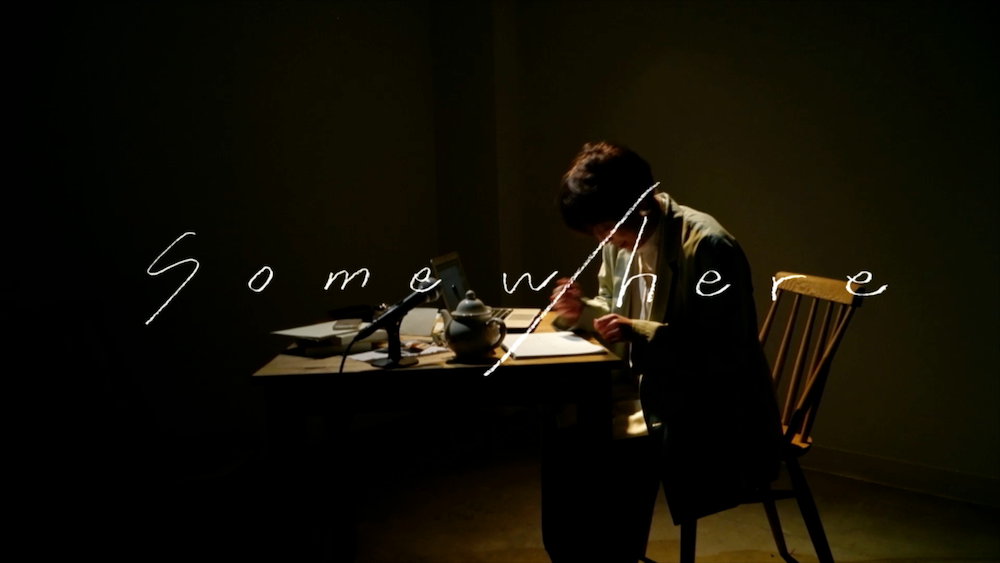
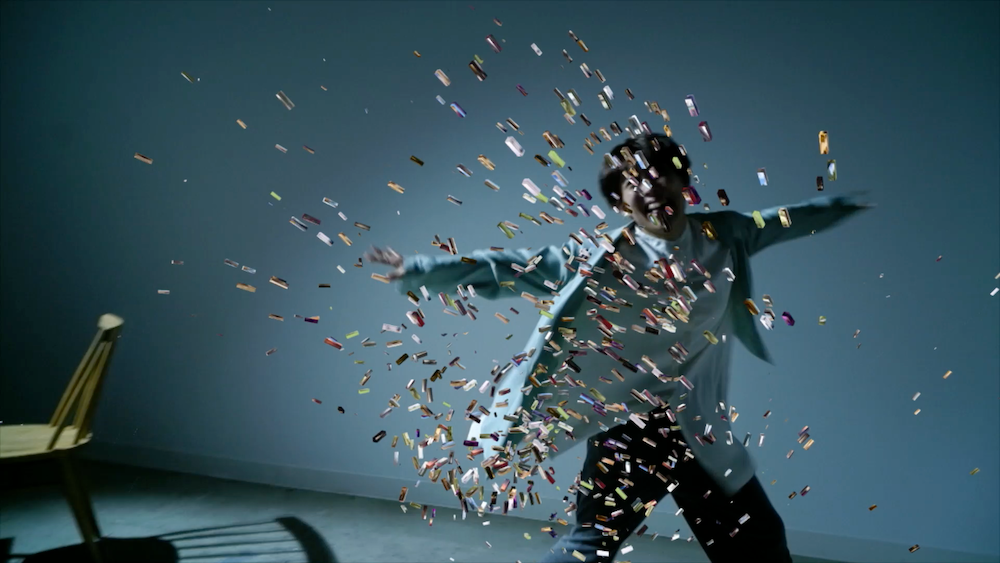
Endo’s performance was a blend of the real and the virtual. Using real-time 3D scanning, Endo cloned herself by overlapping the trajectory of her movements as she danced in a space constructed from photos of her past travels converted into 3D by way of machine learning.
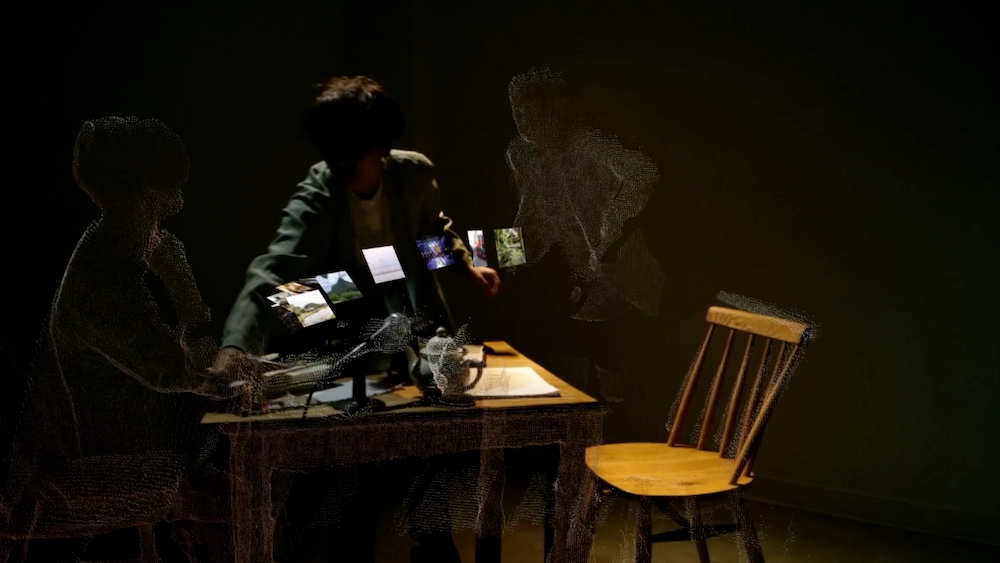
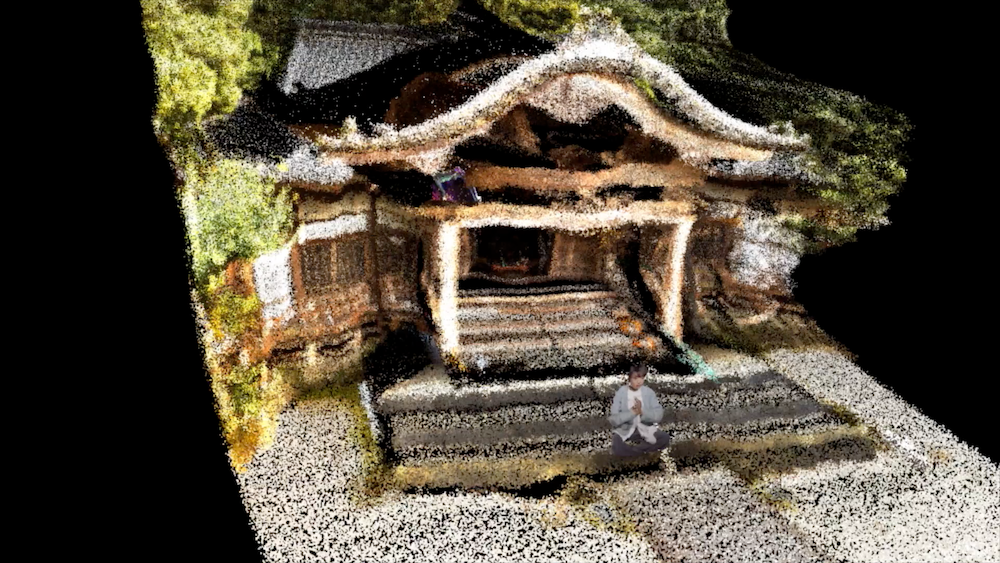
“Somew/here” is a collaborative project between Endo and some of the newer members of Dentsu Lab Tokyo/Dentsu Craft Tokyo, and made possible with “Creative Aliens #002”. It took about three weeks to create the piece, with Endo communicating with the rest of the team remotely from her home in Itoshima, Fukuoka.
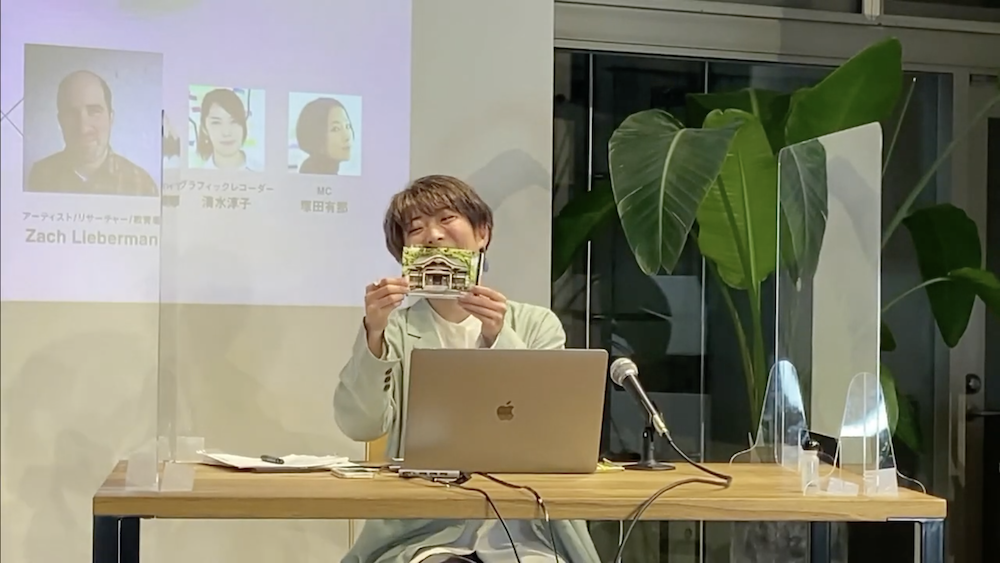
When asked about her thoughts on the final product after
the performance, Endo said, “I loved that the technology
brought back to life in three dimensions all the things
I remember from my travels.
She also said that her
thoughts on technology as a whole had changed during the
planning and production processes. She said, “I used to
think of technology as something distant and unsettling,
but as I went back to my thoughts and feelings again and
again and discussed them, I began to feel that
technology was actually something organic and human.
Sharing in the unseen and the unanswerable
In her talk, Endo talked about her past work and gave an impromptu and interactive performance that she usually does with children where she and the audience “throw around invisible balls”.

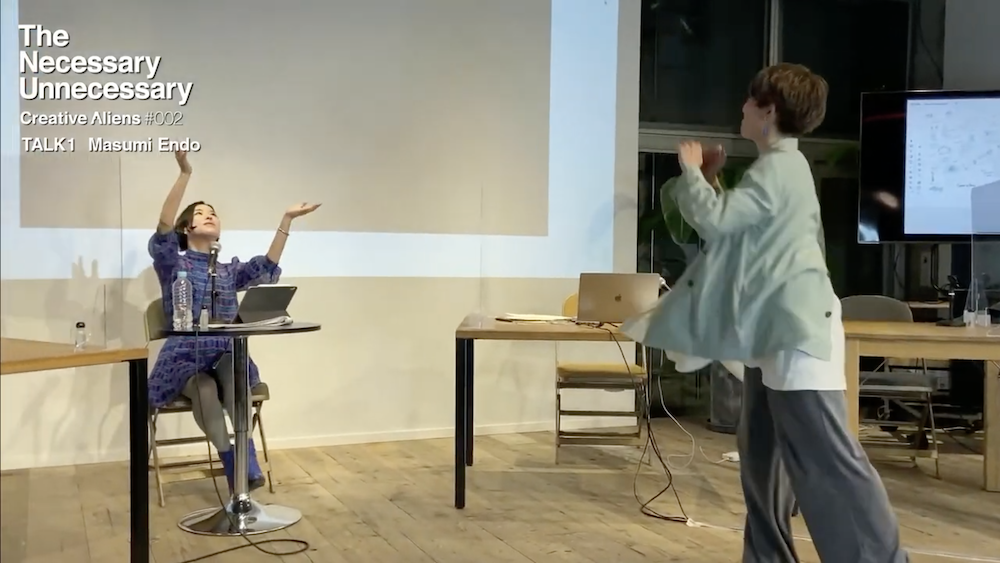
After the performance, Endo explained, “I feel a sense of fulfillment when I am able to communicate with people in a non-verbal and non-formal way. I believe that cherishing what we cannot see with our eyes leads to mutual recognition of differences and makes us kinder. I hope to one day live in a world like that.
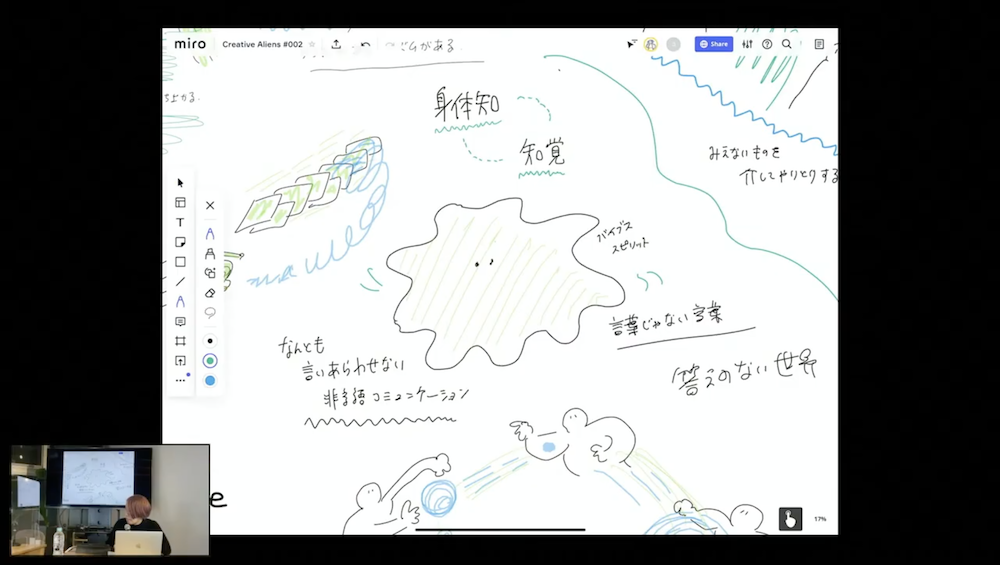
Finding “comfort” amidst the inconveniences of the pandemic
Endo had dealt with the cancellation of her own performances due to the pandemic and the lockdown in London. While she felt anxiety during the “Stay Home” period, she also had some positive insights. At the end of the talk session, she noted, “I think that if we pay attention to and cherish the things in our lives that bring us comfort, we can discover that there are many possibilities even within a restricted environment. I think it’s okay to take this time and use it to find what makes us feel comfortable.
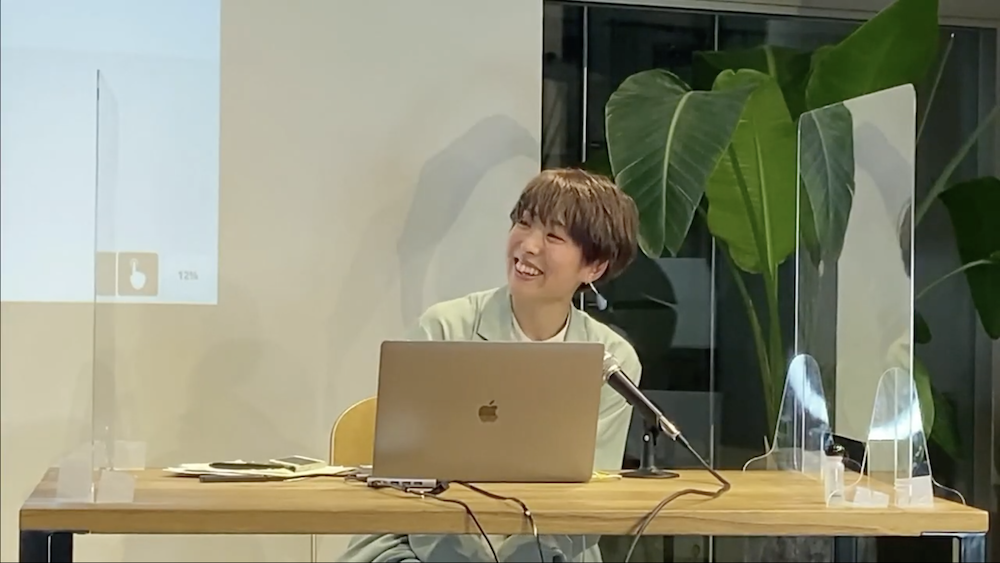
【TALK2|Yasuhiro Suzuki】Creating a new perspective by “reversing” the everyday
“Reversing” the ordinary
The second guest was artist Yasuhiro Suzuki.
Suzuki
talked about his past works under the theme of
“reversing” the everyday.
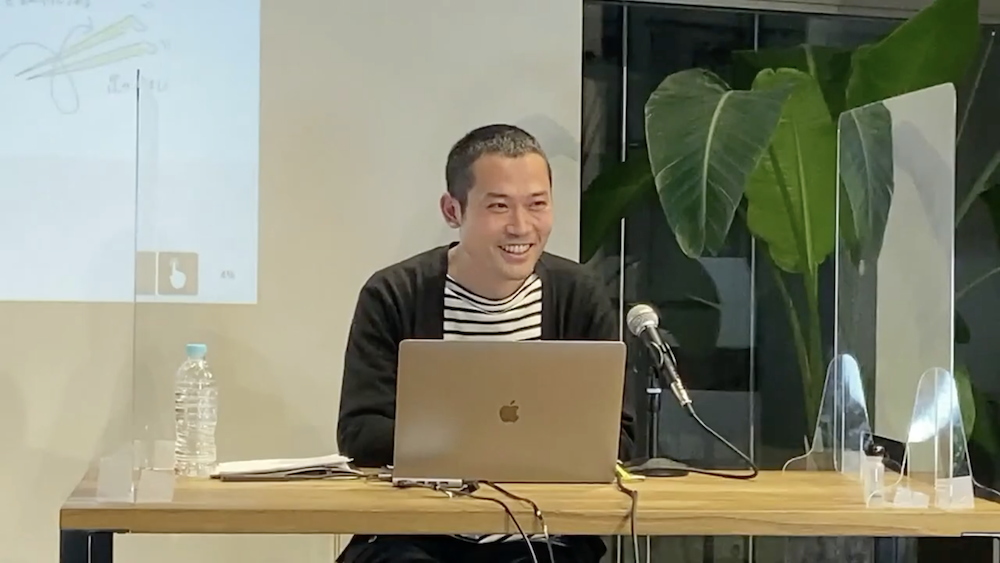
The first work, “Zipper Ship,” came from an experience Suzuki had on an airplane when he “mistook” a ship he saw from the window for “a zipper.”
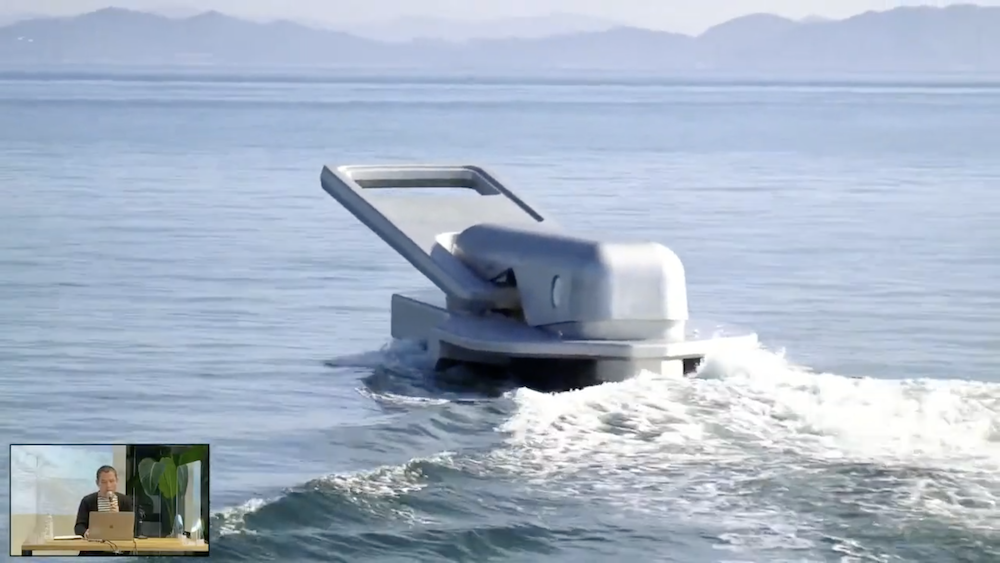
As he watched the video of the “zipper” “unzipping” the
sea that was featured at the Setouchi Triennale, Suzuki
explained, “You could say that the zipper existed to
‘reveal’ the Seto Inland Sea.”
By refusing to look
at either the ship or sea independently, “Fastener Ship”
creates a perspective that looks at both.
What Suzuki’s works have in common is that they “invert”
everyday scenes and concepts.
One of his works
includes scales that measure the “lightness” of bubbles
rather than their “heaviness”; in “Top/Bottom,” the
concept and form of “top” and “bottom” is taken and
reversed; “Full=Empty” focuses on the exchange of water
and air that occurs when drinking from a glass; in
“Present/Past” a stamp labeled “present” that leaves an
impression reading “past”; and “Hand Soap,” a work about
hand-making a bar of soap in the shape of your hands.
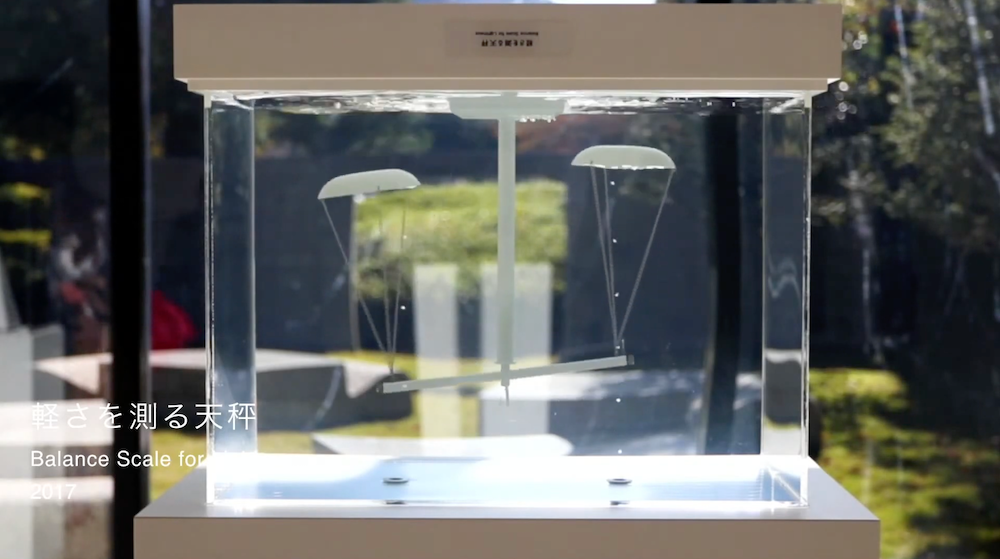
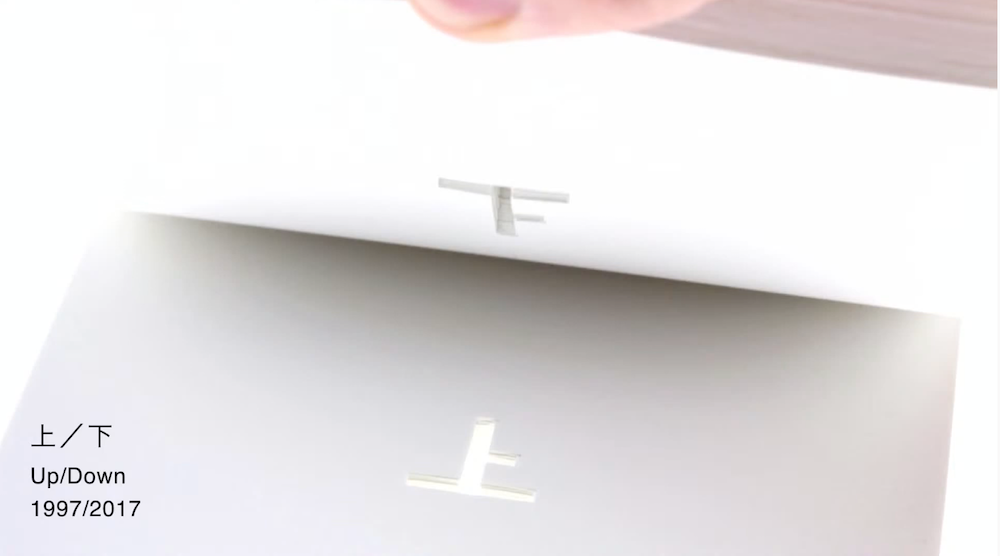
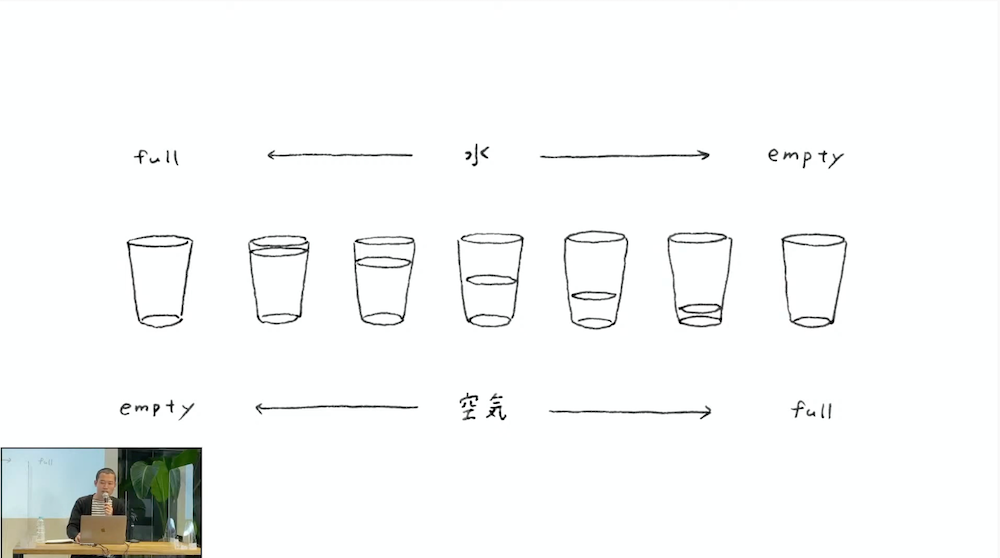
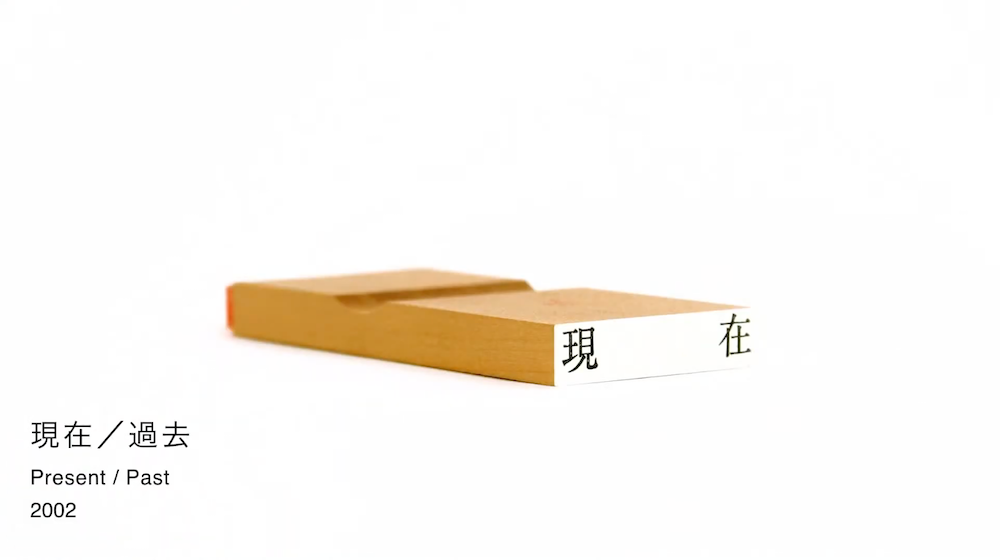
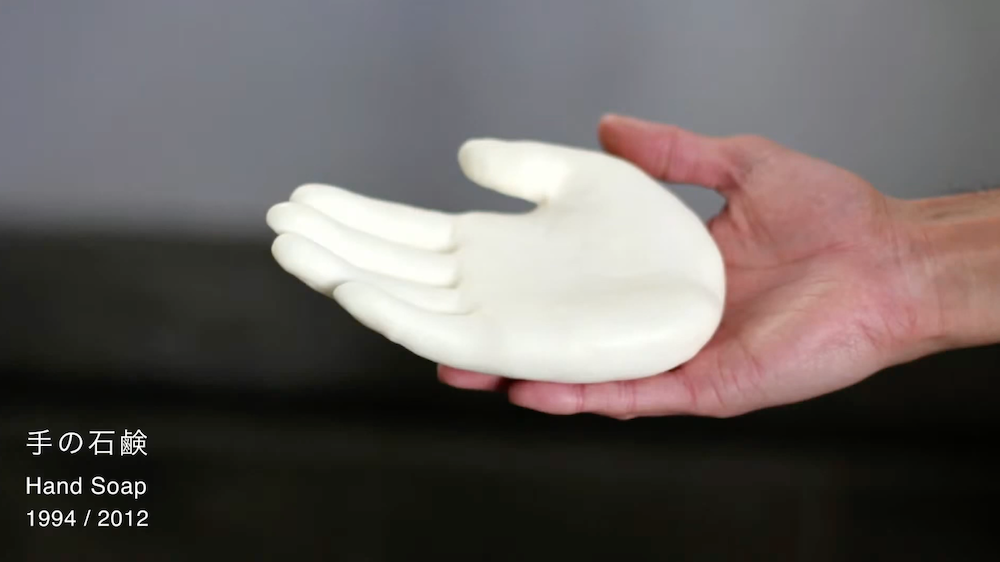
“Art is created when you allow yourself to be present
and even uncomfortable with the work you’re creating and
its faults, and you stop questioning whether it’s worth
doing or whether it’s ‘good’ or ‘bad’” Suzuki expressed,
“it is created out of a sense of discomfort.”
It’s
important to be in the present and to allow yourself to
notice the little things that make the work unique
Suzuki
explains that art is something that is created “out of a
sense of discomfort and when you stay in the present and
be min the of Suzuki says that art is something that is
created out of a sense of discomfort.
“Unnecessary” means more variations of what’s “necessary”
Commenting on the theme of the event, Suzuki said, “I have come to see unnecessity and necessity not as opposites, but as their own unique, separate entities.
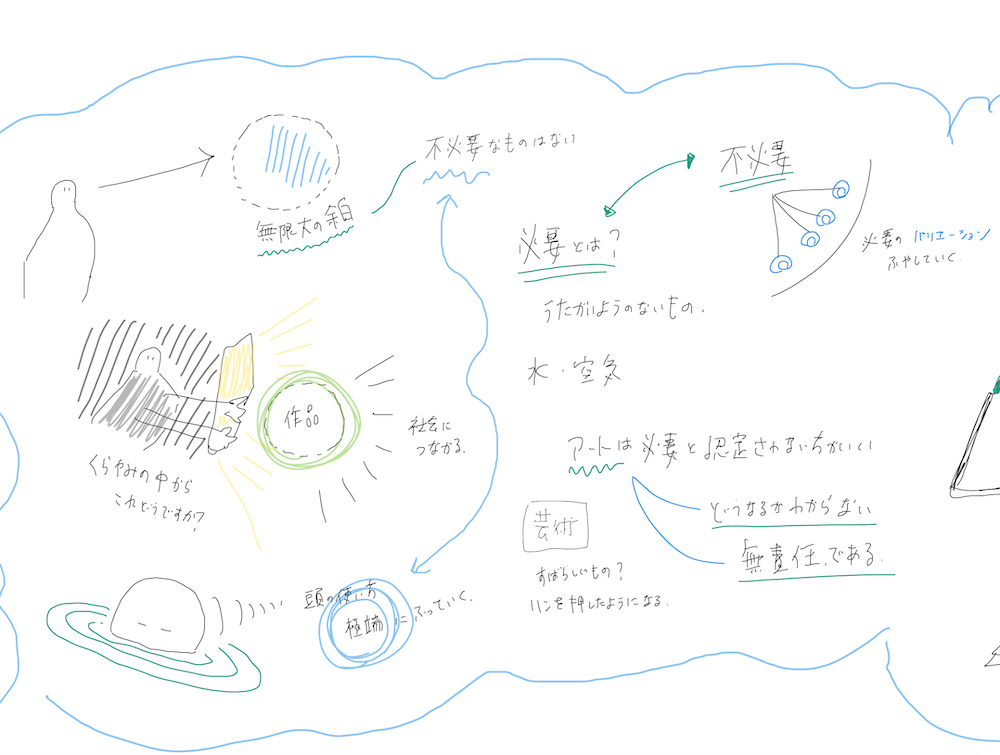
Art feels most alive when it is not recognized as ‘necessary.’ ‘Unnecessary’ just means having more variations of what’s ‘necessary.’ While it is easy for seasoned creators to create something that is guaranteed important from the start, creating something necessary in the midst of uncertainty, that is difficult; you’re not sure where you can turn.
Ideas are germinating seeds within you
In response to Tsukada’s question, “What have you
observed since the start of the pandemic?”, Suzuki
responded, “There have been some tremendous changes in
the world, but the production surrounding my work has
not changed much.”
For Suzuki, an idea is
“something that emerges when there is a need for it.”
“When
something comes to me from the outside, like a
commission, that seed that is buried inside me then
begins to sprout.”
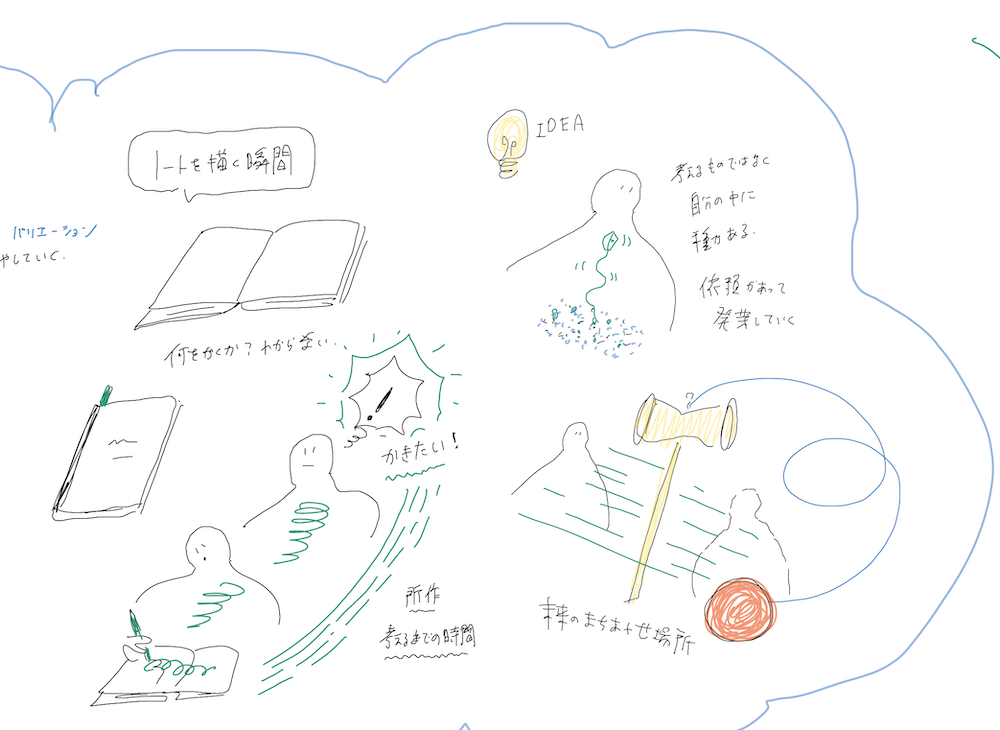
Discovering your next work at the “Meeting Place of the Future”
At the end of the talk session, an audience member asked
Suzuki whether he feels that he seeks out his work or
his work seeks out him.
Using “kendama” (Japanese
version of cup-and-ball game) as an example, Suzuki
explained that “there is an ideal position where the
force of the person holding the kendama and the Earth’s
gravity achieve balance. It is in those places--where
there is no positive nor negative--where you find your
ideas, and once you’ve arrived at one, you’ll know it. I
call this concept, ‘The Meeting Place of the Future’.”

【TALK3|Zach Lieberman】Lieberman’s goal as a creator is to keep surprising himself.
“Expanding myself and my drawings by way of the computer”
The last guest was Zach Lieberman.
Lieberman is an artist who creates artwork with code,
and is also known as one of the founding developers of
openFrameworks, an open source framework for creative
coding.
He is also a professor at the MIT Media Lab
and the founder of the School for Poetic Computation, a
school dedicated to exploring the poetic potential of
code.
He joined via video call from New York to discuss the theme of “Computational Imagination”.
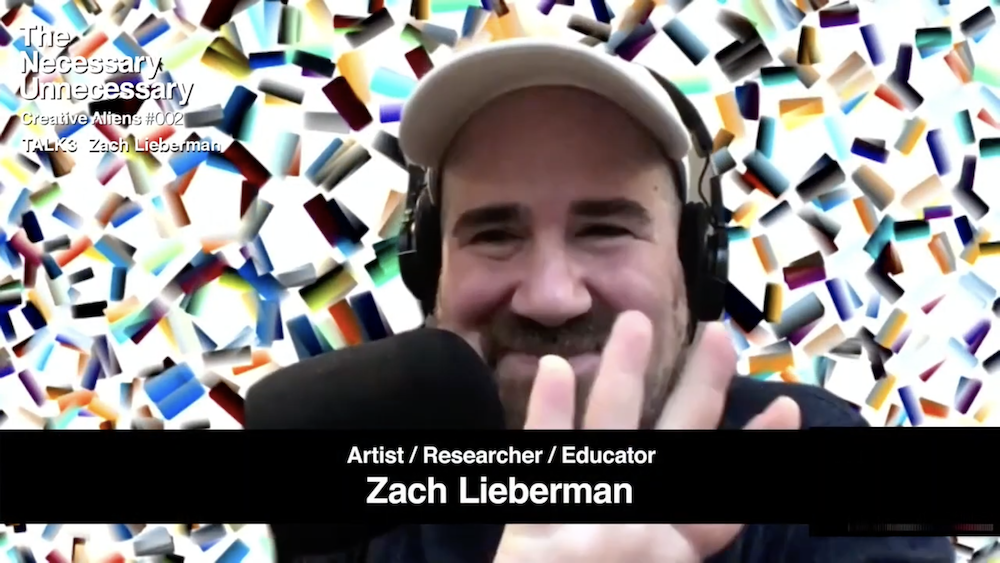
Lieberman’s past projects include “EyeWriter,” which uses an eye-tracking system to allow graffiti artists with paralysis to draw using just their eyes, and “iQ Font,” a font created from the movements of the Toyota iQ car and its tire tracks.

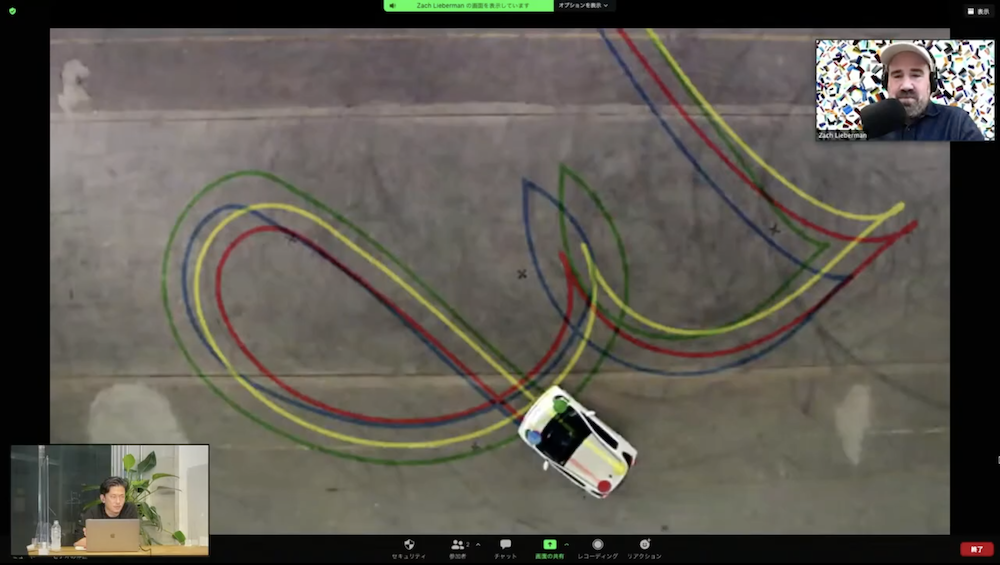
From his recent projects, he talked about “Land Lines,” a work that allows you to explore and connect the topography of satellite images through drawing, as well as an experimental work that visualizes the movement of the body. He also explained his efforts to expand his creativity by combining drawing, the human body and computer technology.


“A Visual Journey Through Addiction” is a project that
focuses on the overdose of opioids (powerful
painkillers), a major problem in the U.S.
Through
numerous interviews and in conjunction with an article
in the New York Times, Lieberman visualized the physical
and psychological suffering of people who had become
addicted to opioids.
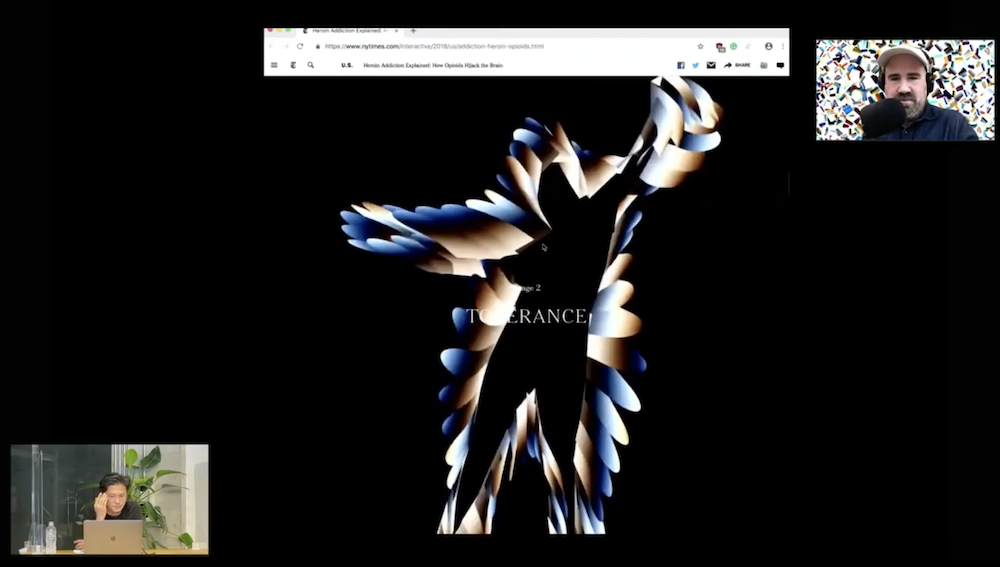
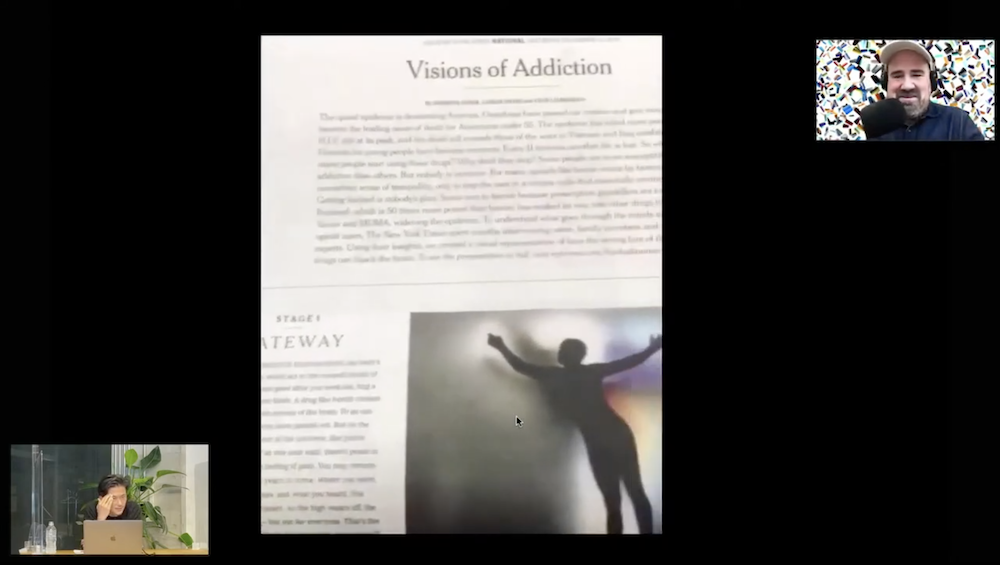
Various AR-based works that transform the landscape of everyday life
Lieberman also created a number of AR-based artworks from the perspective of “What does it mean to have cameras, microphones, speakers, and screens in a space?”
Lieberman presented a number of experimental works including one in which the photo you take virtually remains in the space where it was taken, one in which the frame of a pre-recorded video draws a 3D trajectory, one that lets you record sounds in space and then play them back by literally moving through them, and one where you can create drawings in a 3D space.
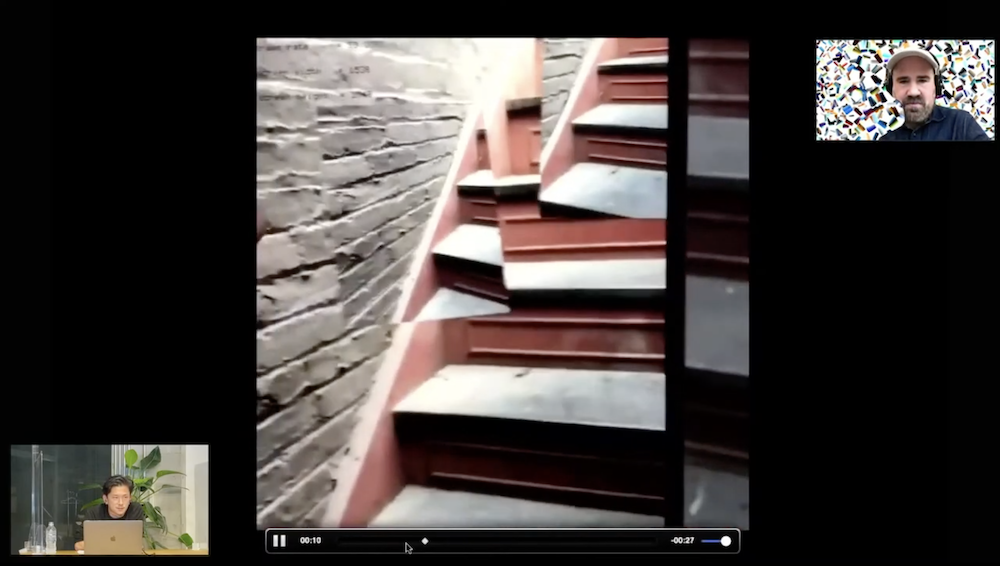

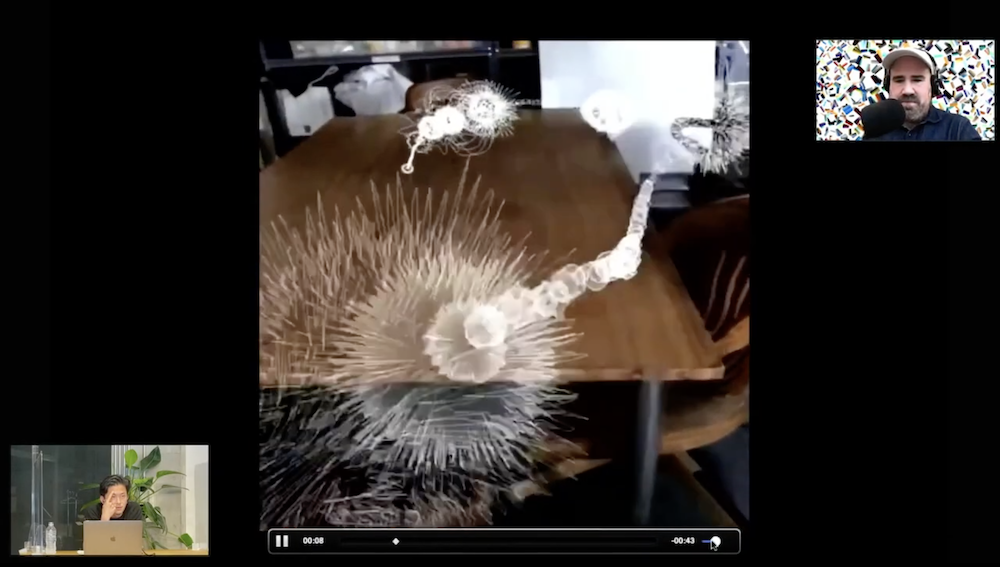

Learn from the past and open up new artistic possibilities
Lieberman explained that he was once influenced by a sentence in the book, “The Art of Computer Designing”, written by Osamu Sato, that read, “The work of past ages accumulates, and is remade again.”
At the school where he teaches, Lieberman says that he
gives an assignment to his students that asks them to
recreate past works by famous artists and designers but
using modern tools.
He said that the process of
reconstructing past works yourself can be very creative,
and that the differences you discover between the
original and your recreation are always interesting.

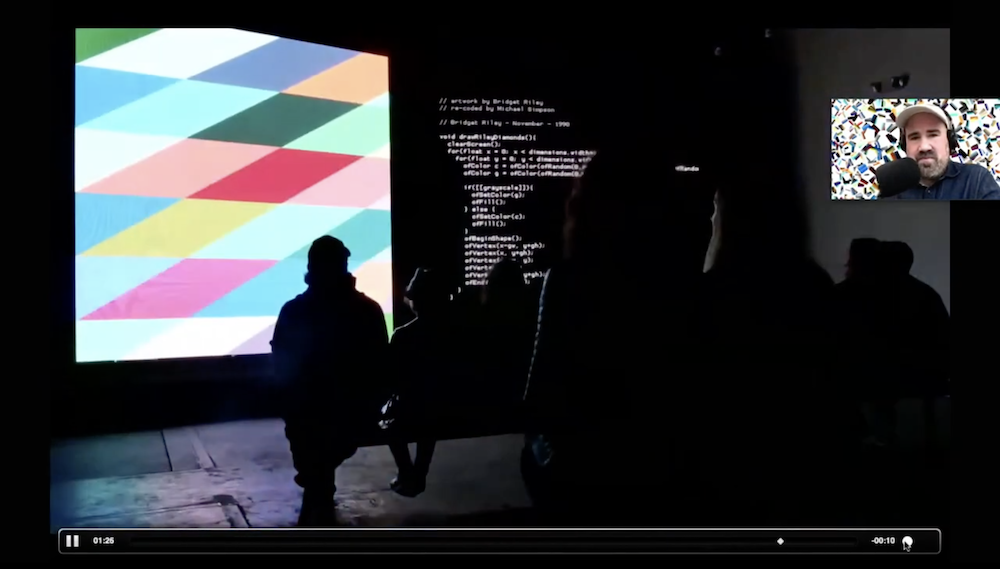
At the end of the session, Lieberman told of an episode in which he felt a sense of despair as he came across “COVID-19” sprayed across a wall in graffiti while taking his dog for a walk one day; but explained that he had that feeling reversed recently when he walked by again and saw that someone had crossed out the graffiti and written “HOPE” in its place.
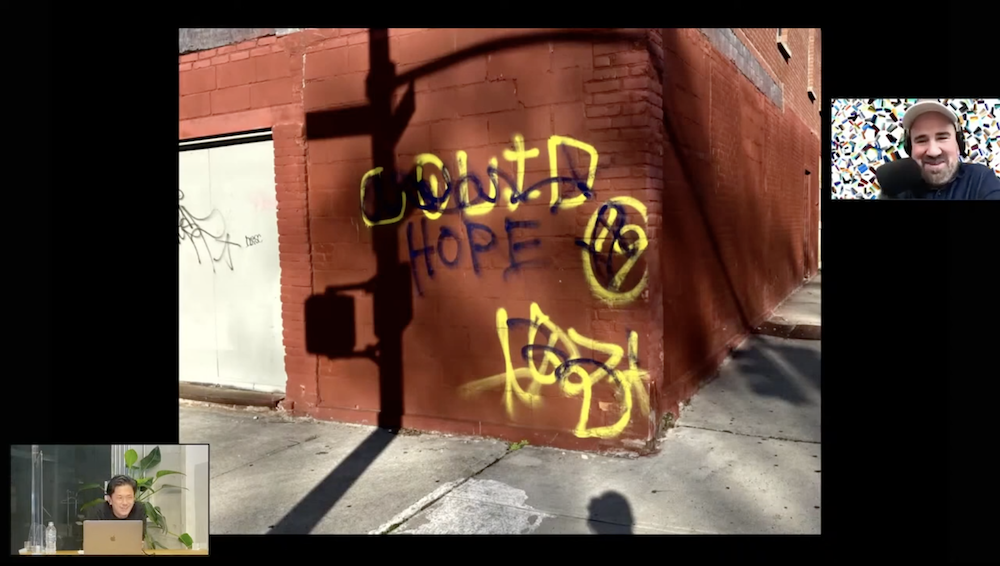
“Constantly surprising myself and getting to know myself through my daily work”
In response to Suzuki’s question, “What kind of insights
do you gain by confronting technology on a daily
basis?”, Lieberman replied, “Daily creation is a process
of understanding oneself, similar to walking through an
unfamiliar country.
The most important thing for
Lieberman as a creator is to always surprise himself.
“This is important [to me] in terms of growing and
changing.”
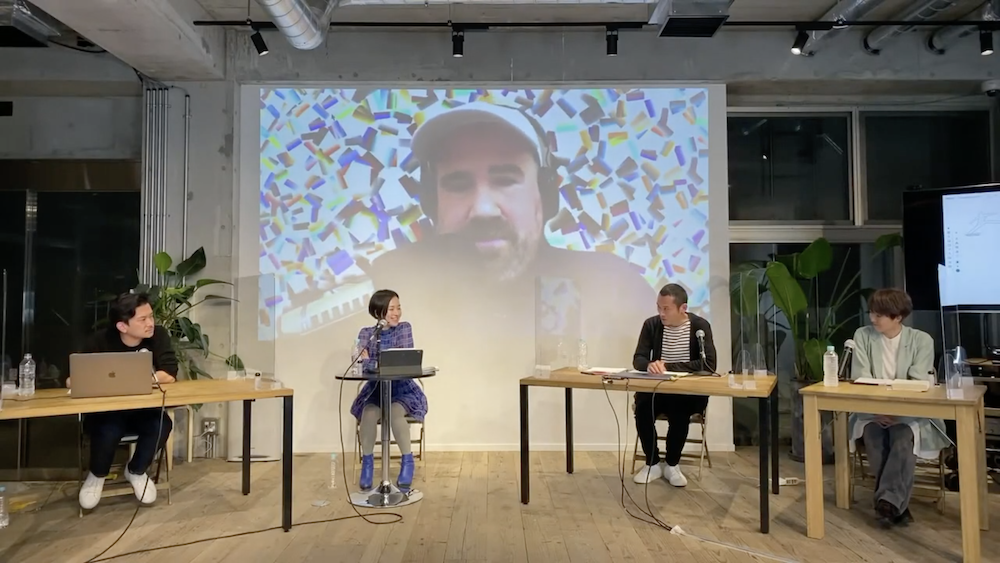
【Closing talk】The “unnecessary” reveals the “necessary” that had gone unnoticed!
In the closing talk, looking back on the event with the illustrations of the graphic recording, Shimizu asked the speakers, “Can we anticipate what will be unnecessary?”
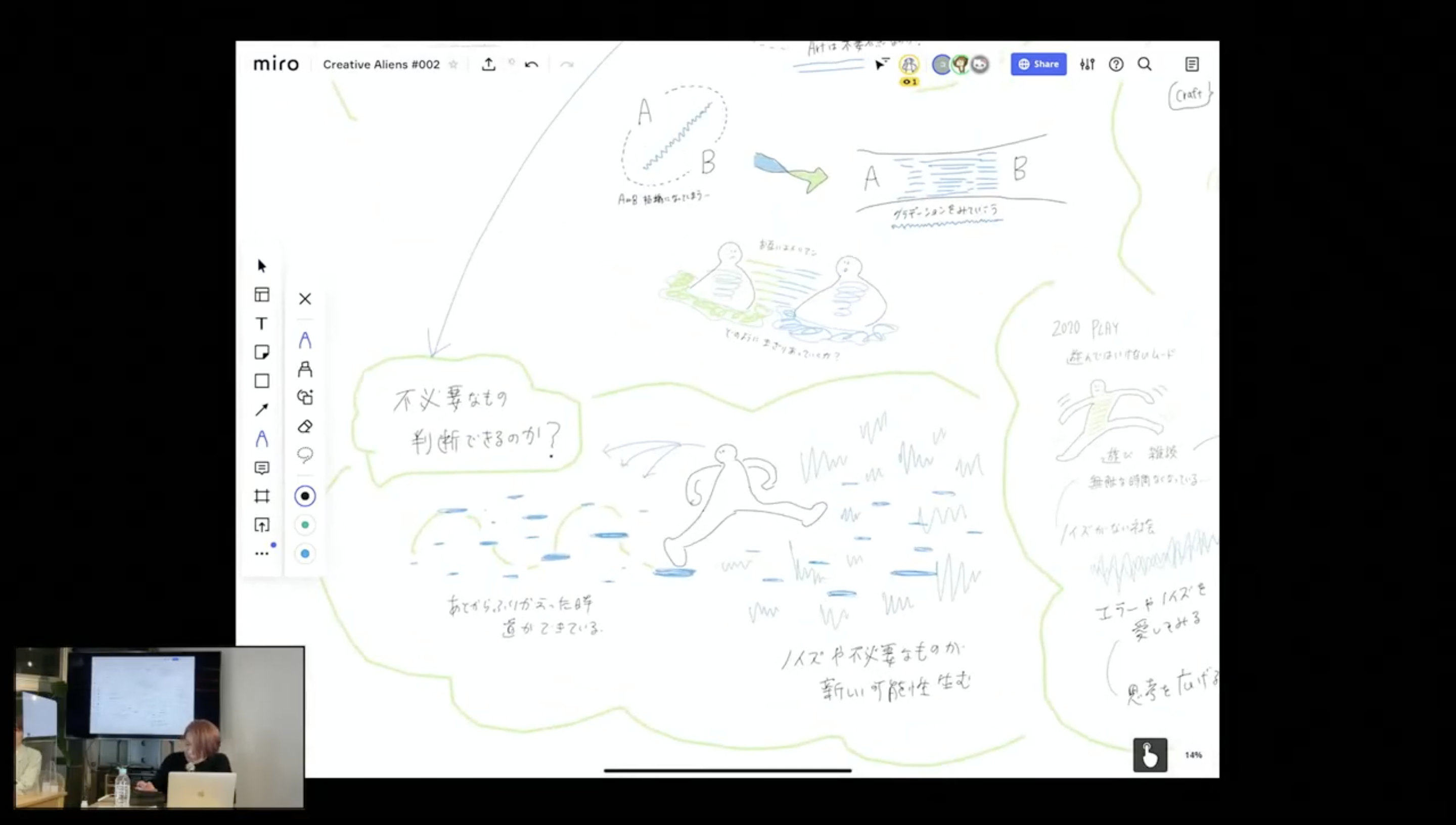
Endo answered, “In my mind, I’ve come to feel that the unnecessary and the necessary are all mixed in together. How I define them changes from day to day depending on how I’m feeling the passage of time and on my own emotions, so I think that determining the necessity or non-necessity of things might be the last thing on my mind, or I may not end up considering it all.”
Suzuki added, “’Unnecessary’ was not a concept that I had been actively considering before. I now feel that it refers to something necessary that has just been left unnoticed. I feel personally influenced by this project to the point where I want to start making the act of looking for and uncovering the overlooked a regular part of my daily life.

Lastly, Kawashima said, “There is a tendency nowadays to want answers immediately, but by thinking about things that don’t have answers, we can broaden our horizons and enrich our lives. That’s what I want to keep in mind from now on,” he concluded.
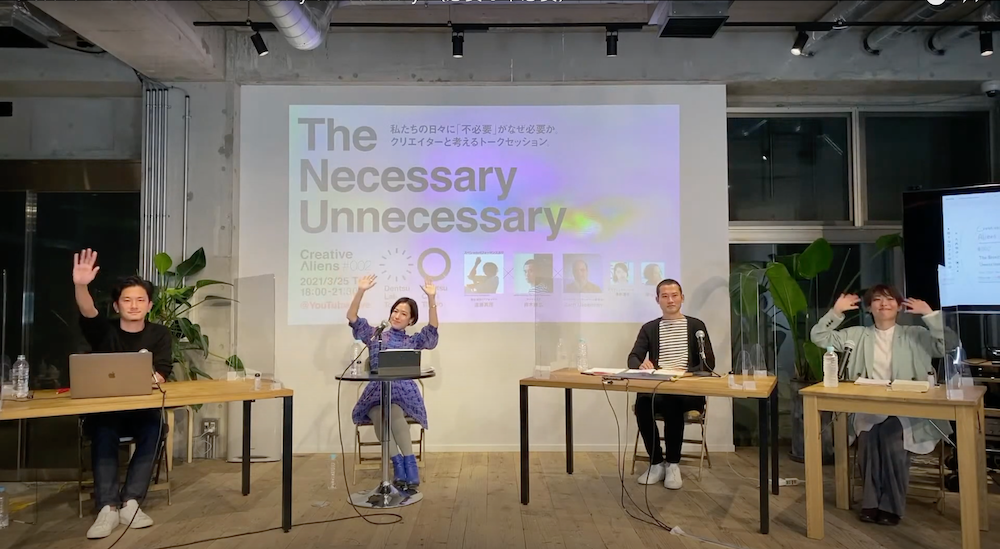
You can watch the recording of the event in its entirety
on YouTube.
Please enjoy the many works, special
performances, and talk sessions that we were not able to
fit into this report.
